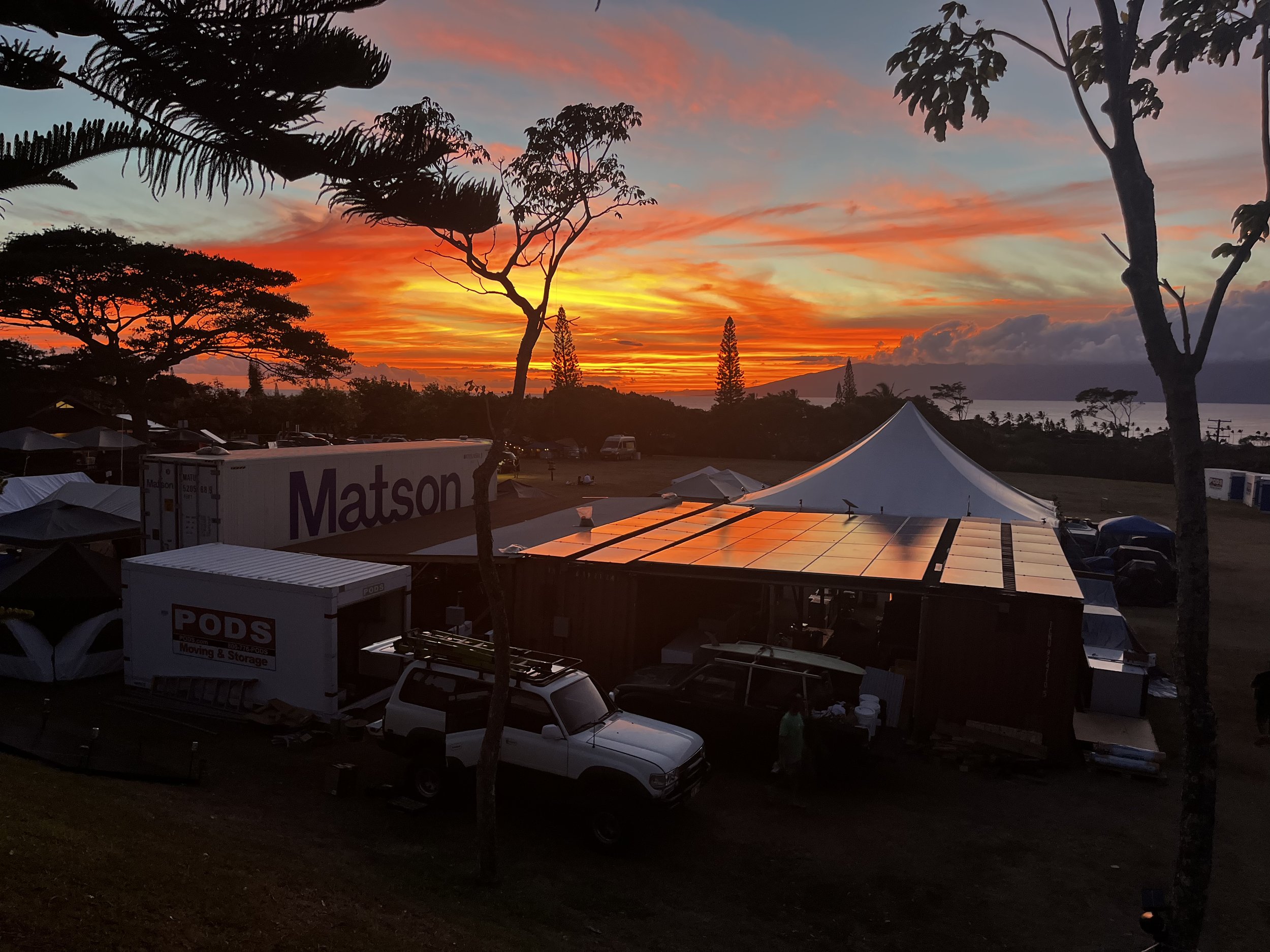An Earth Day message from Footprint Project
When was the last time your power went out? I don’t mean those split second events, almost imperceptible but for your blinking microwave clock. I’m talking about a day or a week or a month or more without electricity. Whatever’s in your refrigerator is going bad. Keeping your phone charged is either impossible or a constant battle. If it’s too hot outside, it’s too hot inside. If it’s too cold outside, it’s too cold inside. And if you rely on electricity for insulin storage or oxygen, you might be in the hospital.
Each year, Earth Day marks forty days until the official start of hurricane season in the Atlantic. If you live on or near the Gulf Coast, you’re likely acutely aware of this date and the apprehension that comes along with it. Or maybe you live in California or Colorado or Oregon, where the height of summer and the height of your wildfire anxiety are in direct correlation to one another.
I’m from Minnesota and for me, the existential dread of disaster season and its resulting blackouts were always something that happened to other people. Even the word ‘blackout’ felt abstract, almost apocalyptic, evoking images of disembodied flashlight beams and the flicker of candlelight.
Now, in my role at Footprint Project, when I think of prolonged power outages, it’s not an image but a sound that first comes to mind: the cacophony of gas generators, an insidious noise that, after the initial kick into gear, you eventually cease to notice until it’s turned off. Once you start listening for it, you’ll hear them everywhere; like cicadas, but all running on fossil fuels.
From the portable gas generator kept in your garage and dusted off for hurricane season to commercial-scale units keeping hospitals, data centers, and the military online, backup power generation plays an important, lifesaving role when disasters leave a community in the dark. But as greenhouse gas emissions increase the frequency and intensity of extreme weather events, we need to reimagine the source of that backup power.
Studies have shown that disaster power outages lead to an increased number of mortalities. While it’s no surprise that 911 dispatchers and emergency rooms experience an uptick in demand for their services, fatalities and injuries from debris or drowning are only a piece of the puzzle.
In 2020, 15 people lost their lives after Hurricane Laura. Eight were caused by carbon monoxide poisoning from gas generators. Following Hurricane Ida in 2021, 22 people died of carbon monoxide poisoning, excessive heat, lack of oxygen, and nursing home evacuations. Disaster data often refer to these mortalities as “indirect deaths.” While it’s hard to know how many lives were saved by a gas generator, we know for a fact that it was also fatal and avoidable for others.
When it comes to backup power in climate emergencies, why are fossil fuels still at the forefront?
The need for electricity after a storm also extends to those coming in to provide humanitarian aid. Disaster relief services almost always require organizations like FEMA, the Red Cross, or World Central Kitchen to stand up field operations near or within the radius of the incident. This is where donations are shipped, stored, and distributed, meals are cooked and served, chainsaw crews are coordinated, and volunteers or people who have been displaced sleep on cots. Whether it’s a household of faith, a convention center, or tents in a parking lot, these hubs require power for lights, communication, cold storage, and more. If the grid is still down or the infrastructure being erected is without access to grid power, fossil fuel generators are the go-to source of electricity.
How do we break the negative feedback loop of relying on fossil fuels to respond to and recover from disasters that are increasingly worsened by climate change?
Last but not least, disasters exacerbate disparities. A study on power outages related to climate events and social vulnerability found that Arkansas, Louisiana, and Michigan suffer the combined burdens of frequent, prolonged outages, high social vulnerability, and prevalence of electricity-dependent medical equipment use. It is more difficult for people who live below the poverty line or people who have disabilities or accessibility needs to evacuate, weather, and recover from disasters.
How are we ensuring that frontline communities - those that experience the first and worst impacts of climate change, including many that have been historically burdened with the negative health and environmental effects of the fossil fuel industry itself - are prioritized when it comes to building back greener?
This Earth Day, in the spirit of optimism, we want to share what we believe in at Footprint Project.
We believe in breaking negative feedback loops, like deploying fossil fuel infrastructure to climate disasters or expecting traditional supercapitalism to solve the problems it created... Do we need to go on?
We believe in building positive ones, like developing sustainable, inclusive infrastructure for climate emergencies and training others to do what we do.
We believe in jumping the privilege gap. Let’s get the coolest stuff to the folks who never get cool stuff. Why else are we here?
We believe in bridging high tech with high trust. Activating cutting edge technologies based on local partner insight requires us to take significant risks. Those risks are worth it.
We believe in staying critical, staying nimble. Just because we thought something was a good idea doesn’t mean that it still is. We learn as we grow.
Thank you to all of our friends, partners, funders, and followers for believing in the work that we do.















